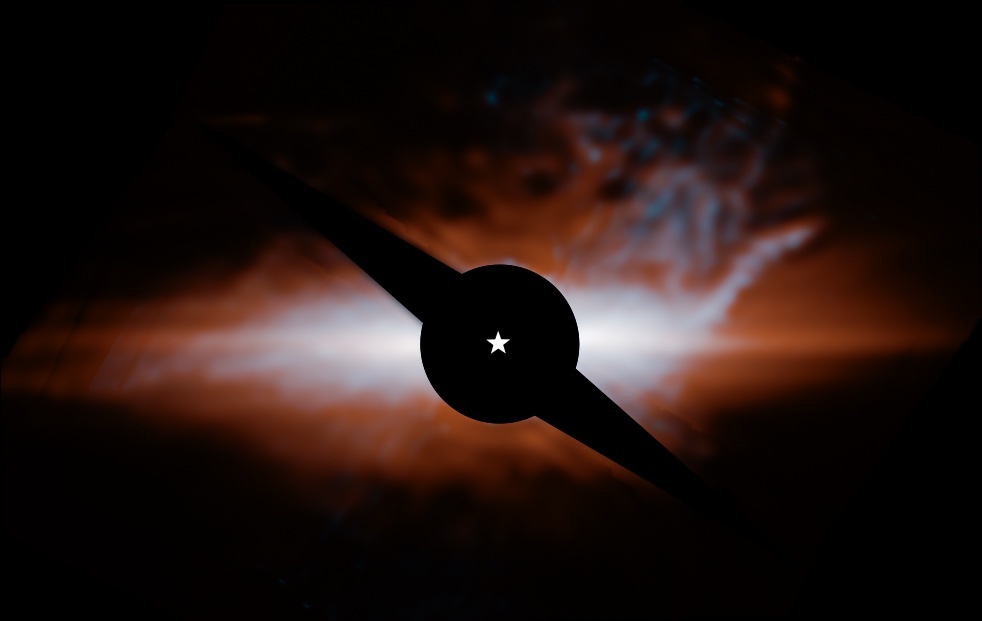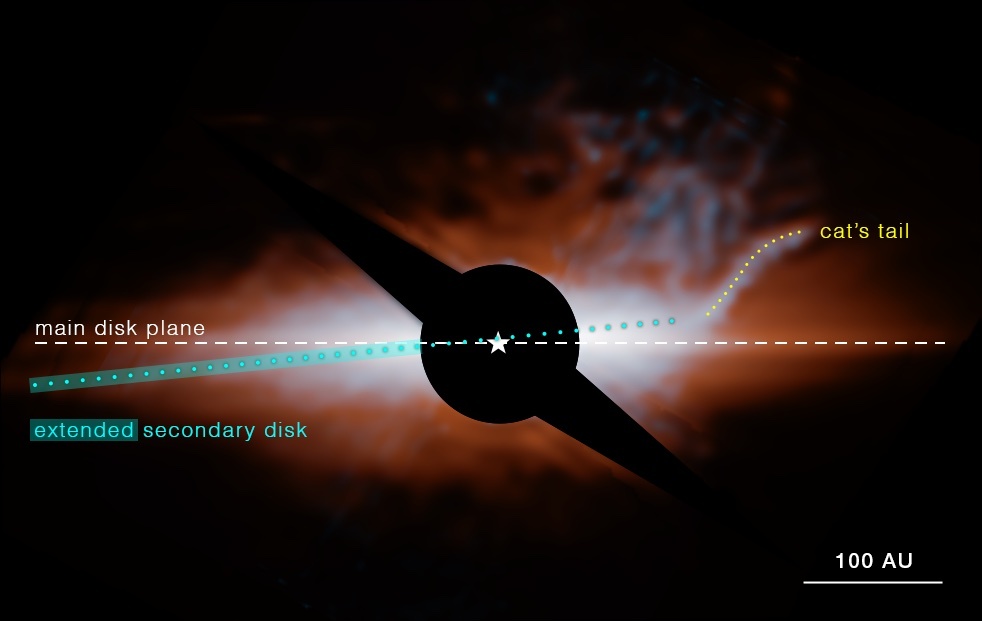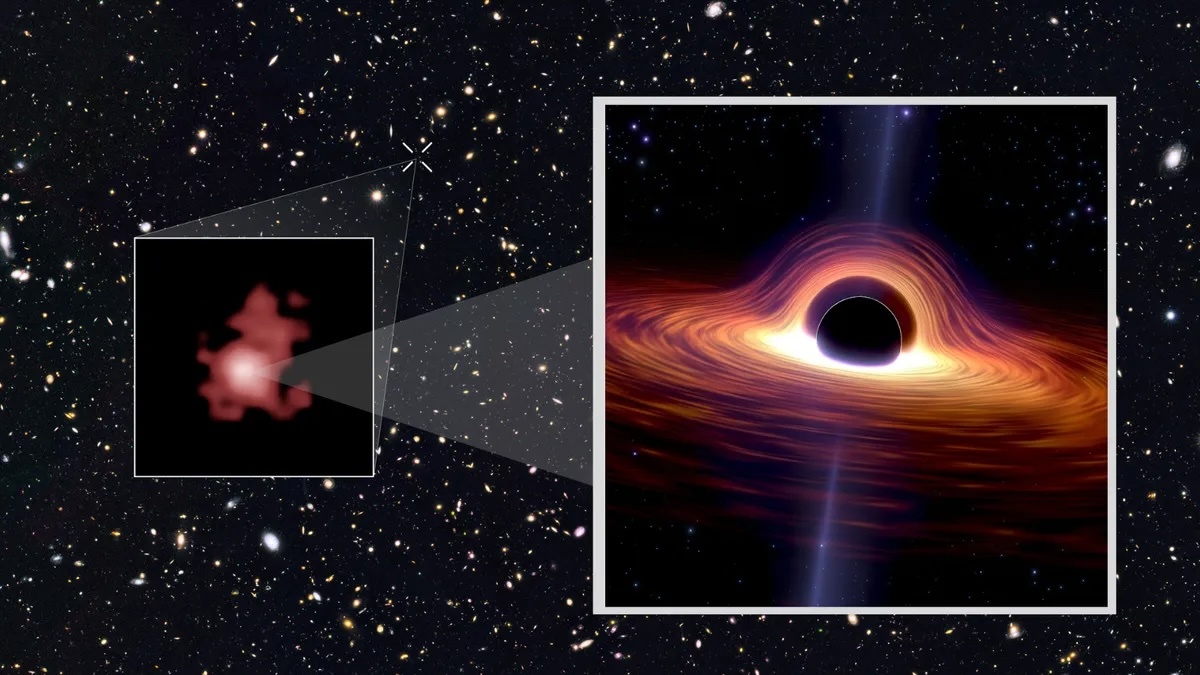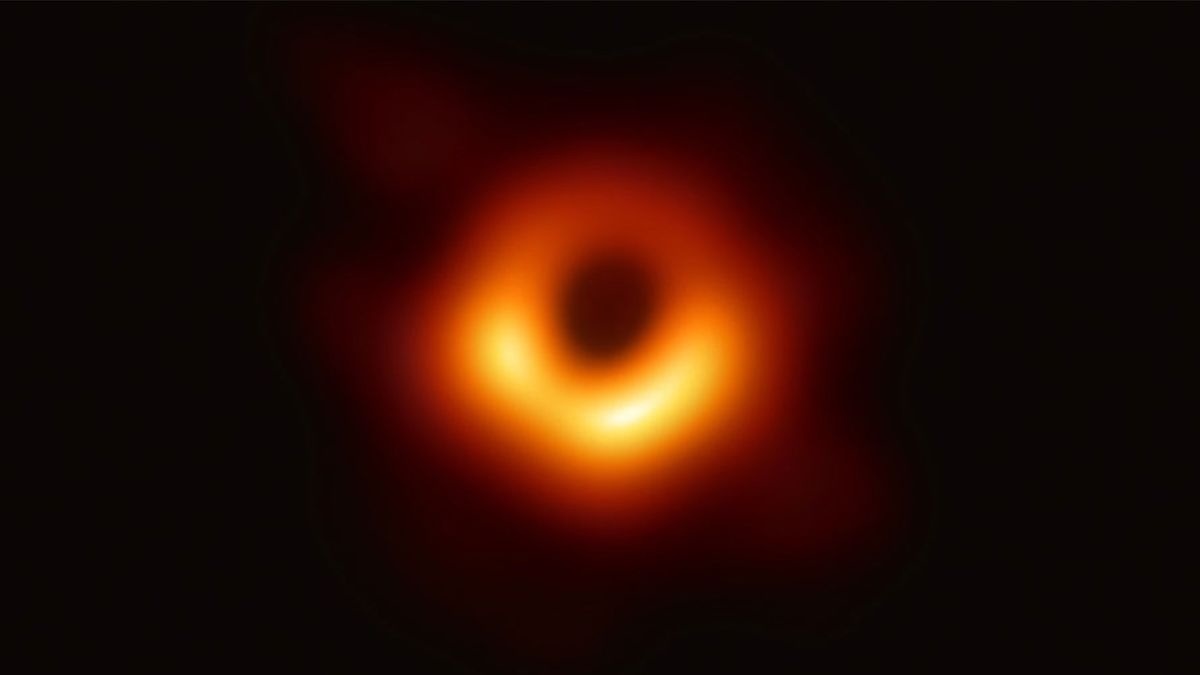12.01.2024
NASA’s Webb Discovers Dusty ‘Cat’s Tail’ in Beta Pictoris System

Beta Pictoris, a young planetary system located just 63 light-years away, continues to intrigue scientists even after decades of in-depth study. It possesses the first dust disk imaged around another star — a disk of debris produced by collisions between asteroids, comets, and planetesimals. Observations from NASA’s Hubble Space Telescope revealed a second debris disk in this system, inclined with respect to the outer disk, which was seen first. Now, a team of astronomers using NASA’s James Webb Space Telescope to image the Beta Pictoris system (Beta Pic) has discovered a new, previously unseen structure.
The team, led by Isabel Rebollido of the Astrobiology Center in Spain, used Webb’s NIRCam (Near-Infrared Camera) and MIRI (Mid-Infrared Instrument) to investigate the composition of Beta Pic’s previously detected main and secondary debris disks. The results exceeded their expectations, revealing a sharply inclined branch of dust, shaped like a cat’s tail, that extends from the southwest portion of the secondary debris disk.
“Beta Pictoris is the debris disk that has it all: It has a really bright, close star that we can study very well, and a complex cirumstellar environment with a multi-component disk, exocomets, and two imaged exoplanets,” said Rebollido, lead author of the study. “While there have been previous observations from the ground in this wavelength range, they did not have the sensitivity and the spatial resolution that we now have with Webb, so they didn’t detect this feature.”
A Star’s Portrait Improved with Webb
Even with Webb or JWST, peering at Beta Pic in the right wavelength range — in this case, the mid-infrared — was crucial to detect the cat’s tail, as it only appeared in the MIRI data. Webb’s mid-infrared data also revealed differences in temperature between Beta Pic’s two disks, which likely is due to differences in composition.
“We didn’t expect Webb to reveal that there are two different types of material around Beta Pic, but MIRI clearly showed us that the material of the secondary disk and cat’s tail is hotter than the main disk,” said Christopher Stark, a co-author of the study at NASA’s Goddard Space Flight Center in Greenbelt, Maryland. “The dust that forms that disk and tail must be very dark, so we don’t easily see it at visible wavelengths — but in the mid-infrared, it’s glowing.”
To explain the hotter temperature, the team deduced that the dust may be highly porous “organic refractory material,” similar to the matter found on the surfaces of comets and asteroids in our solar system. For example, a preliminary analysis of material sampled from asteroid Bennu by NASA’s OSIRIS-REx mission found it to be very dark and carbon-rich, much like what MIRI detected at Beta Pic.
Image: Annotated Image

The Tail’s Puzzling Beginning Warrants Future Research
However, a major lingering question remains: What could explain the shape of the cat’s tail, a uniquely curved feature unlike what is seen in disks around other stars?
Rebollido and the team modeled various scenarios in an attempt to emulate the cat’s tail and unravel its origins. Though further research and testing is required, the team presents a strong hypothesis that the cat’s tail is the result of a dust production event that occurred a mere one hundred years ago.
“Something happens — like a collision — and a lot of dust is produced,” shared Marshall Perrin, a co-author of the study at the Space Telescope Science Institute in Baltimore, Maryland. “At first, the dust goes in the same orbital direction as its source, but then it also starts to spread out. The light from the star pushes the smallest, fluffiest dust particles away from the star faster, while the bigger grains do not move as much, creating a long tendril of dust.”
“The cat’s tail feature is highly unusual, and reproducing the curvature with a dynamical model was difficult,” explained Stark. “Our model requires dust that can be pushed out of the system extremely rapidly, which again suggests it’s made of organic refractory material.”
The team’s preferred model explains the sharp angle of the tail away from the disk as a simple optical illusion. Our perspective combined with the curved shape of the tail creates the observed angle of the tail, while in fact, the arc of material is only departing from the disk at a five-degree incline. Taking into consideration the tail’s brightness, the team estimates the amount of dust within the cat’s tail to be equivalent to a large main belt asteroid spread out across 10 billion miles.
A recent dust production event within Beta Pic’s debris disks could also explain a newly-seen asymmetric extension of the inclined inner disk, as shown in the MIRI data and seen only on the side opposite of the tail. Recent collisional dust production could also account for a feature previously spotted by the Atacama Large Millimeter/submillimeter Array in 2014: a clump of carbon monoxide (CO) located near the cat’s tail. Since the star’s radiation should break down CO within roughly one hundred years, this still-present concentration of gas could be lingering evidence of the same event.
“Our research suggests that Beta Pic may be even more active and chaotic than we had previously thought,” said Stark. “JWST continues to surprise us, even when looking at the most well-studied objects. We have a completely new window into these planetary systems.”
These results were presented in a press conference at the 243rd meeting of the American Astronomical Society in New Orleans, Louisiana.
The observations were taken as part of Guaranteed Time Observation program 1411.
Quelle: NASA
----
Update: 19.01.2024
.



